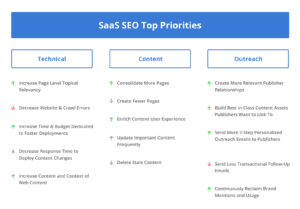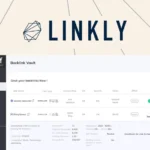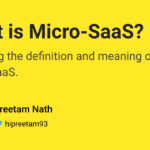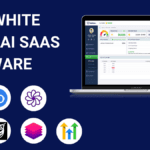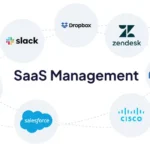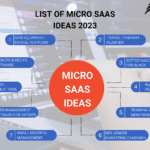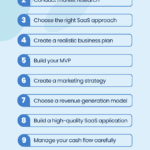A successful SEO strategy for SaaS involves targeted keyword research and high-quality content creation. It also includes optimizing the website for user experience and search engines.
SaaS companies face unique challenges and opportunities in the digital marketplace. Effective SEO can drive organic traffic, increase visibility, and generate leads. Start with identifying the right keywords that potential customers use. Create valuable, informative content around these keywords to attract and engage your audience.
Ensure your website is fast, mobile-friendly, and easy to navigate. High-quality backlinks from authoritative sites can also boost your search engine rankings. Regularly monitor and adjust your strategy based on performance metrics. This comprehensive approach helps SaaS businesses stay competitive and grow in a crowded market.
Introduction To Seo For Saas
SEO is crucial for SaaS companies. It helps them gain online visibility. With a good strategy, SaaS can attract potential customers. They can also retain existing users. This section will cover the basics of SEO for SaaS.
Importance In The Digital Age
In today's digital world, SEO is vital. Many people use search engines to find solutions. A strong SEO strategy helps SaaS companies appear in search results. This can lead to increased traffic and conversions.
Here are some key benefits:
- Increased visibility: More people can find your SaaS product.
- Higher credibility: Top search rankings build trust.
- Cost-effective: Organic traffic reduces marketing costs.
Differences From Traditional Seo
SEO for SaaS differs from traditional SEO. SaaS focuses more on customer retention. Traditional SEO often aims for one-time sales. SaaS companies need ongoing engagement.
Key differences include:
| Aspect | SaaS SEO | Traditional SEO |
|---|---|---|
| Goal | Long-term user engagement | One-time sales |
| Content | Educational and support-focused | Sales and product-focused |
| Metrics | User retention and LTV (Lifetime Value) | Conversion rate and sales |
Understanding these differences helps in creating an effective SEO strategy for SaaS. Focus on long-term goals and user engagement. This ensures success in the digital age.
Keyword Research Fundamentals
Keyword research forms the bedrock of any SEO strategy for SaaS. Understanding the right keywords can drive targeted traffic. It attracts users who are genuinely interested in your software solution. This section covers essential elements, ensuring your SaaS business thrives online.
Identifying Target Audience
Before diving into keyword tools, start with knowing your audience. Ask these questions:
- Who uses your software?
- What problems does your software solve?
- What language do your users speak?
Understanding these answers helps in selecting relevant keywords. Create user personas to visualize your audience. These personas help in aligning your keyword strategy with user needs.
Tools For Keyword Discovery
Several tools can assist in discovering valuable keywords. Below are some popular options:
| Tool | Description |
|---|---|
| Google Keyword Planner | Offers keyword ideas based on search volume and competition. |
| Ahrefs | Provides detailed keyword metrics and competitor analysis. |
| SEMrush | Helps in finding keyword opportunities and tracking rankings. |
Use these tools to compile a list of potential keywords. Look for keywords with high search volume but low competition. These keywords can drive traffic with less effort.
Incorporate long-tail keywords to capture niche markets. These keywords are more specific and have lower competition. They often convert better as they target precise user needs.
On-page Seo Techniques
On-page SEO techniques are crucial for SaaS companies. They help improve your website's visibility. These techniques ensure your content ranks higher on search engines. Let's dive into some key on-page SEO strategies for SaaS.
Optimizing Meta Tags
Meta tags play a vital role in SEO. They help search engines understand your content. Here are some tips for optimizing meta tags:
- Title Tags: Keep it under 60 characters. Include primary keywords.
- Meta Descriptions: Write compelling descriptions. Keep it under 160 characters.
- Header Tags: Use H1 for the main title. Use H2 and H3 for subheadings.
| Meta Tag | Best Practice |
|---|---|
| Title Tag | Include primary keyword, under 60 characters |
| Meta Description | Compelling text, under 160 characters |
| Header Tags | H1 for title, H2/H3 for subheadings |
Content Quality And Relevance
High-quality content attracts and retains users. It also improves your search engine rankings. Here are some tips for creating quality content:
- Keyword Research: Find keywords your audience uses.
- Original Content: Avoid duplicate content. Write unique articles.
- User Intent: Answer users' questions directly. Provide value.
Focus on user experience. Use simple language and short sentences.
Url Structure Best Practices
URL structure impacts your site's SEO. A clean URL structure is easy to understand. Here are some best practices:
- Short URLs: Keep URLs short and descriptive.
- Keywords: Include primary keywords in the URL.
- Hyphens: Use hyphens to separate words.
A well-structured URL is essential for better rankings.
Technical Seo Essentials
Technical SEO is vital for SaaS businesses. It ensures your website runs smoothly and ranks well. This section covers essential technical SEO strategies.
Improving Site Speed
Site speed is crucial for user experience. A fast site keeps users engaged and happy.
- Optimize images: Compress images to reduce load time.
- Use a Content Delivery Network (CDN): CDNs distribute your content globally, reducing load time.
- Minimize JavaScript and CSS: Clean up code to speed up your site.
- Enable browser caching: Store files locally to reduce load time.
Use tools like Google PageSpeed Insights. Identify and fix speed issues easily.
Mobile Responsiveness
More users access websites through mobile devices. Your site must be mobile-friendly.
- Responsive design: Ensure your site adapts to any screen size.
- Touch-friendly elements: Make buttons and links easy to tap.
- Fast mobile loading: Optimize your mobile site for speed.
- Avoid pop-ups: Pop-ups can annoy mobile users.
Use Google's Mobile-Friendly Test. Ensure your site is optimized for all devices.
Secure Sockets Layer (ssl) Importance
SSL certificates are essential for website security. They protect user data and build trust.
- Data encryption: SSL encrypts data between the server and user.
- SEO boost: Google favors sites with SSL certificates.
- User trust: SSL shows users your site is secure.
- Prevent attacks: SSL helps protect against data breaches.
Enable SSL on your site. Use tools like Let's Encrypt for free SSL certificates.
Content Marketing Strategies
Effective content marketing strategies are crucial for SaaS businesses. They help attract and retain customers. Here, we explore three key strategies: creating valuable resources, leveraging educational content, and guest blogging for backlinks.
Creating Valuable Resources
Creating valuable resources is essential. These can include:
- Whitepapers
- Case studies
- Infographics
These resources should address common problems your audience faces. Provide actionable solutions. Use clear and concise language. Ensure each piece of content is easy to understand. Include visuals to make the content engaging.
Leveraging Educational Content
Educational content establishes your authority. It builds trust with your audience. Examples include:
- Blog posts
- Webinars
- Video tutorials
Focus on topics that are relevant to your product. Teach your audience how to use your software. Explain best practices. Use simple terms. Avoid jargon. Make each piece of content actionable.
Guest Blogging For Backlinks
Guest blogging is a powerful strategy. It helps you reach a broader audience. It also improves your SEO. Steps to follow include:
- Identify reputable blogs in your industry
- Pitch relevant topics to them
- Write high-quality, valuable content
Ensure your content is unique. Include a link back to your site. This boosts your domain authority. It drives organic traffic. Collaborate with influencers in your niche. They can help amplify your message.
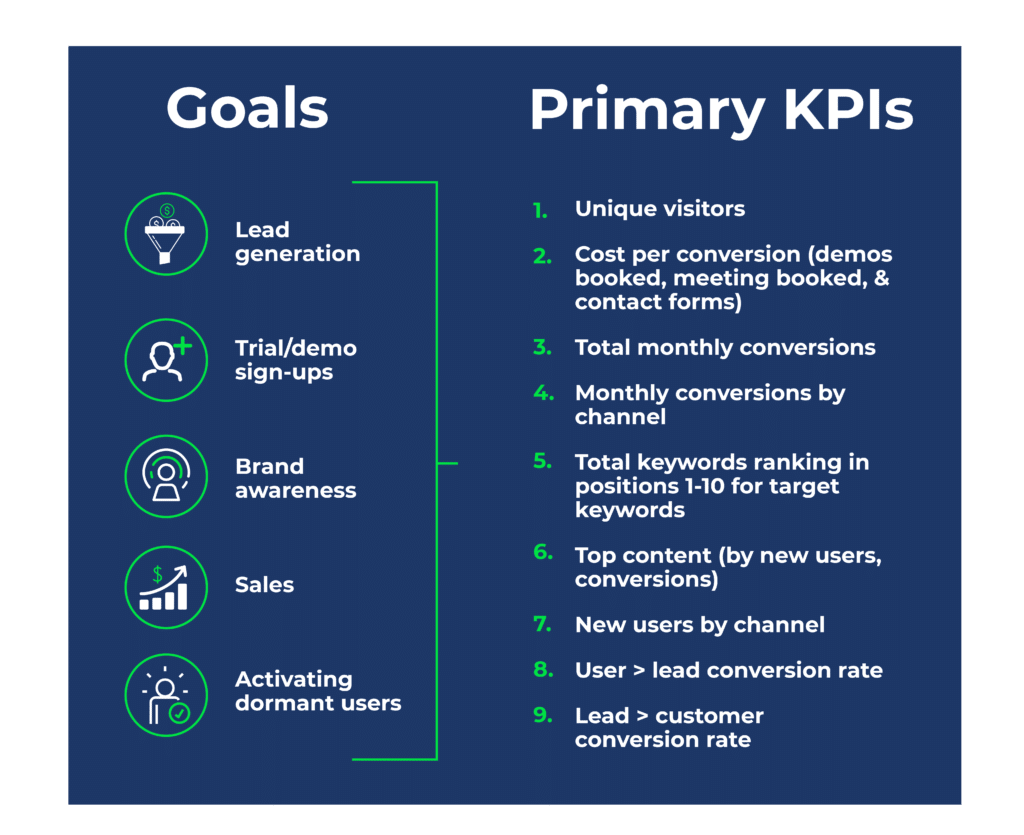
Credit: revenuezen.com
Link Building For Saas
Link building is a vital component of any successful SEO strategy for SaaS businesses. Quality backlinks can significantly enhance your website's authority and search engine ranking. Investing time in acquiring high-quality backlinks can lead to increased organic traffic and better visibility in search results.
Quality Over Quantity
Not all backlinks are created equal. Focus on obtaining high-quality backlinks from reputable sources. A single link from a high-authority site can be more valuable than multiple links from low-quality sites.
High-quality backlinks come from websites with strong domain authority. They are relevant to your industry and have a good reputation. Avoid spammy sites that can harm your SEO efforts.
| Quality Backlinks | Low-Quality Backlinks |
|---|---|
| High domain authority sites | Low domain authority sites |
| Industry-relevant websites | Irrelevant or unrelated sites |
| Reputable sources | Spammy or dubious sources |
Strategies For Acquiring Backlinks
Effective link building requires strategic planning. Below are some strategies for acquiring backlinks that can benefit your SaaS business.
- Guest Blogging: Write valuable content for authoritative blogs in your industry. Include a backlink to your website in your author bio or within the content.
- Content Marketing: Create shareable and informative content such as infographics, case studies, or whitepapers. High-quality content attracts natural backlinks.
- Partnerships: Collaborate with other SaaS companies or industry influencers. Exchange backlinks through co-authored content or mutual promotions.
- Broken Link Building: Identify broken links on reputable websites. Offer your content as a replacement, providing value to both the site owner and your SEO efforts.
- Social Media Engagement: Promote your content on social media platforms. Increased visibility can lead to natural backlinks from interested users or influencers.
These strategies can help you build a strong backlink profile. Remember to focus on quality and relevance to maximize the impact on your SEO efforts.
Leveraging Social Media
Social media plays a crucial role in boosting your SaaS business. It helps in reaching a broader audience and engaging potential customers. Leveraging social media effectively can significantly improve your SEO strategy. Here are some key areas to focus on:
Enhancing Brand Presence
Enhancing your brand presence on social media is vital. It builds trust and recognition among users. Follow these steps to enhance your brand presence:
- Create engaging and shareable content.
- Use consistent branding across all social platforms.
- Interact with your audience regularly.
- Post updates about your SaaS product features.
- Use hashtags relevant to your industry.
Driving Traffic Through Social Channels
Driving traffic to your website through social media can boost your SEO rankings. Here's how you can drive traffic effectively:
- Share Blog Posts: Share your blog posts on social media to attract readers.
- Run Ad Campaigns: Use targeted ads to reach your ideal audience.
- Engage with Influencers: Collaborate with influencers to expand your reach.
- Use Visual Content: Post eye-catching images and videos to engage users.
- Host Webinars: Promote webinars and live sessions to drive interest.
| Social Media Platform | Best Practices |
|---|---|
| Share updates, run ads, and use Facebook Live. | |
| Tweet regularly, use hashtags, and engage with followers. | |
| Post professional content, join groups, and network. | |
| Share visuals, use stories, and collaborate with influencers. |
By leveraging social media, you can enhance your brand presence and drive traffic. Both are essential for an effective SEO strategy for your SaaS business.

Credit: beomniscient.com
Analyzing And Adapting
In the dynamic world of SaaS, analyzing and adapting your SEO strategy is crucial. The landscape of search engines constantly evolves, making it essential to refine your approach. This section explores how to use analytics and stay ahead of algorithm changes.
Using Analytics For Strategy Refinement
Analytics tools provide valuable insights into your SEO performance. Google Analytics and similar tools help track website traffic and user behavior. These insights reveal which keywords drive the most traffic.
By focusing on high-performing keywords, you can optimize your content. Use this data to create more targeted and relevant content for your audience. Analytics also help identify pages with high bounce rates.
Improving these pages can enhance user experience and retention. Regularly review your analytics data to spot trends and patterns. This proactive approach ensures your SEO strategy remains effective.
Staying Ahead Of Algorithm Changes
Search engine algorithms change frequently. Staying updated with these changes is vital. Follow reputable SEO blogs and industry news to stay informed.
Implementing best practices helps maintain your website's ranking. Focus on creating high-quality, relevant content. Ensure your website is mobile-friendly and fast-loading.
Backlinks also play a crucial role in SEO. Regularly check your backlink profile and disavow harmful links. Use tools like Google Search Console to monitor your site's health.
By adapting to algorithm changes, you can maintain and improve your SEO performance.
| Key Aspects | Actions |
|---|---|
| Analytics Tools | Track traffic and user behavior |
| Keyword Optimization | Focus on high-performing keywords |
| Content Creation | Create relevant and targeted content |
| Algorithm Updates | Stay informed and implement best practices |
| Backlink Management | Monitor and disavow harmful links |
Local Seo For Global Reach
When expanding a SaaS business globally, targeting local markets is crucial. Local SEO helps improve your visibility in specific regions. This strategy can drastically boost your global reach by tapping into localized searches. Let's explore how to optimize for multiple regions and understand international SEO considerations.
Optimizing For Multiple Regions
To target multiple regions effectively, create separate pages for each location. Use the following techniques:
- Localized Keywords: Use region-specific keywords in your content.
- Local Backlinks: Obtain backlinks from local websites.
- Location-Specific Meta Tags: Customize meta tags for each region.
Here’s a sample structure:
| Region | URL Structure | Localized Content |
|---|---|---|
| North America | example.com/us | Content tailored for U.S. audience |
| Europe | example.com/eu | Content tailored for European audience |
International Seo Considerations
International SEO involves more than translating content. It requires understanding cultural nuances and search behaviors. Follow these guidelines:
- Hreflang Tags: Use
to indicate language and regional targeting. - Server Location: Host your website on servers located in your target regions.
- Geo-Targeting in Google Search Console: Set your target country in Google Search Console.
These steps ensure your content reaches the right audience. By optimizing for multiple regions and considering international SEO, your SaaS business can achieve a global presence.
Common Pitfalls To Avoid
Implementing an effective SEO strategy for SaaS can be complex. Avoiding common pitfalls ensures your efforts yield the best results. Let's explore some common mistakes and how to steer clear of them.
Over-optimization Penalties
Over-optimization can lead to penalties from search engines. Keyword stuffing is a primary culprit. Avoid cramming too many keywords into your content. Instead, focus on creating valuable, natural content. Another issue is unnatural backlinks. Build backlinks organically. Purchase or spam links can hurt your rankings.
Neglecting User Experience
User experience (UX) directly impacts SEO. A slow website frustrates users and increases bounce rates. Ensure your site loads quickly. Use tools like Google PageSpeed Insights. Poor navigation also harms UX. Make sure your website is easy to navigate. Clear menus and simple layouts improve user satisfaction.
Another key factor is mobile optimization. Many users access sites via mobile devices. Ensure your website is mobile-friendly. Use responsive design to adapt to different screen sizes.
Inconsistent Nap Information
NAP stands for Name, Address, and Phone number. Consistency in NAP information is crucial for local SEO. Inconsistent NAP details confuse search engines and users. Ensure your NAP information is the same across all platforms.
| Platform | Name | Address | Phone Number |
|---|---|---|---|
| Website | Example SaaS | 123 Main St, Anytown | (123) 456-7890 |
| Google My Business | Example SaaS | 123 Main St, Anytown | (123) 456-7890 |
| Social Media | Example SaaS | 123 Main St, Anytown | (123) 456-7890 |
Keeping your NAP information consistent builds trust. It also improves your local search rankings.
The Role Of Ai In Seo
The role of AI in SEO is transforming the digital landscape. AI helps companies optimize their content more efficiently. SaaS businesses benefit greatly from these advancements. AI tools can analyze vast amounts of data quickly. They offer insights that traditional methods cannot provide.
Emerging Technologies And Tools
New AI technologies are revolutionizing SEO strategies. These tools automate many SEO tasks.
- Natural Language Processing (NLP): Understands user search intent better.
- Machine Learning: Improves search engine algorithms.
- Chatbots: Enhance user engagement on websites.
These tools help SaaS companies stay competitive. They improve user experience and increase organic traffic.
Predictive Analytics For Seo Planning
Predictive analytics uses AI to forecast SEO trends. It helps businesses plan their SEO strategies.
| AI Technique | SEO Benefit |
|---|---|
| Data Mining | Identifies high-potential keywords. |
| Pattern Recognition | Finds trends in user behavior. |
| Sentiment Analysis | Measures customer satisfaction. |
These methods allow SaaS businesses to stay ahead. They can adjust their strategies based on accurate data predictions.
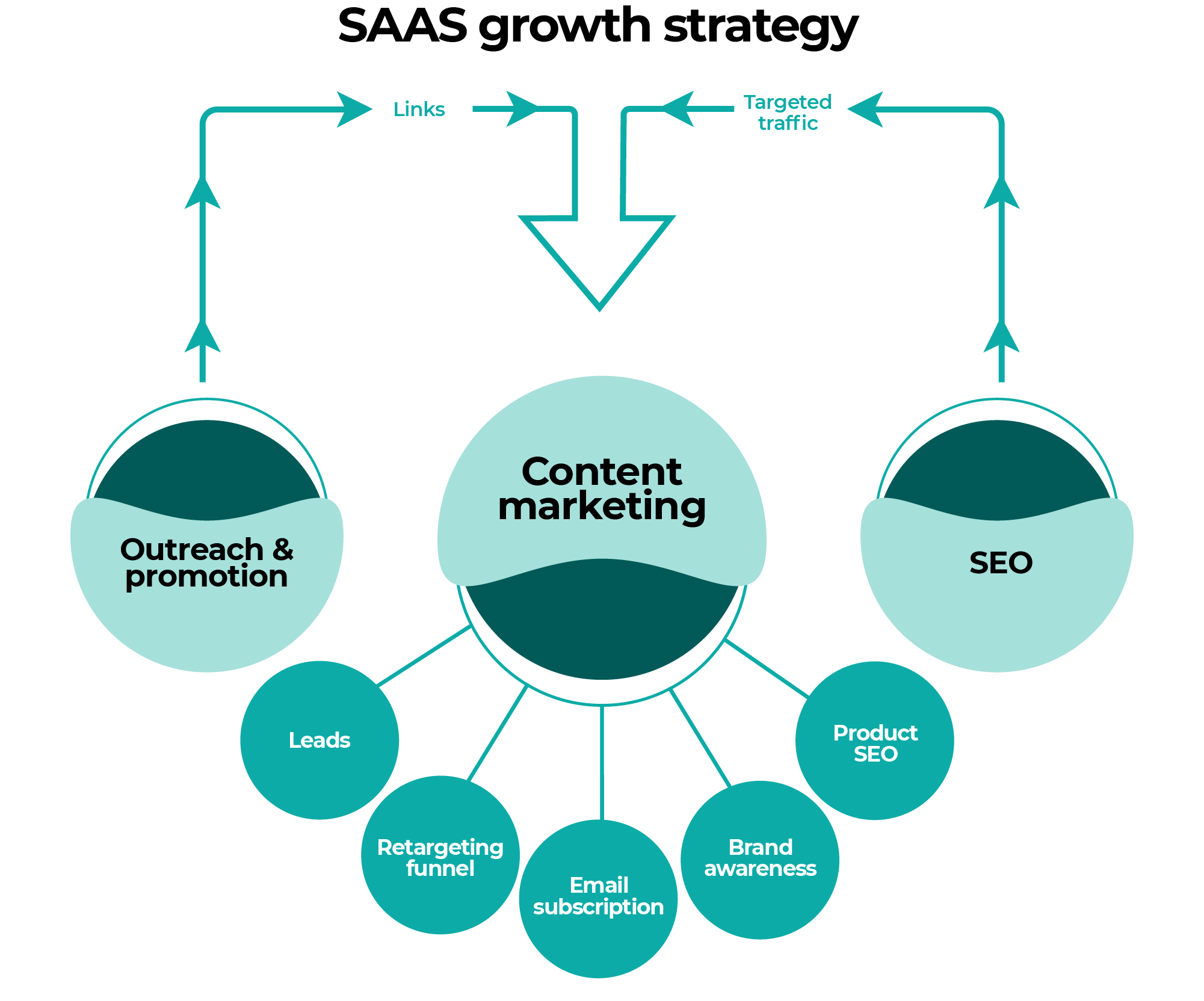
Credit: www.firstpagestrategy.com
Frequently Asked Questions
How To Improve Seo For Saas Companies?
To improve SEO for SaaS companies, focus on keyword research, create valuable content, optimize on-page elements, build quality backlinks, and improve site speed.
What Is One Of The Basics Of A Saas Seo Strategy?
Keyword research is crucial for a SaaS SEO strategy. It helps identify terms potential customers use.
What Are The Top 5 Seo Strategies?
1. Optimize website content with relevant keywords. 2. Create high-quality, engaging content regularly. 3. Improve website load speed. 4. Build quality backlinks from reputable sites. 5. Ensure mobile-friendly website design.
How Is Seo For Saas Different?
SEO for SaaS focuses on targeting specific keywords relevant to software solutions. It emphasizes content marketing, user experience, and customer retention.
Conclusion
Crafting an effective SEO strategy for SaaS can significantly boost your online presence. Focus on keyword research, quality content, and backlinks. Regularly monitor and adjust your tactics for optimal results. Implementing these strategies can help your SaaS business thrive in a competitive market.
Stay proactive and watch your growth soar.
